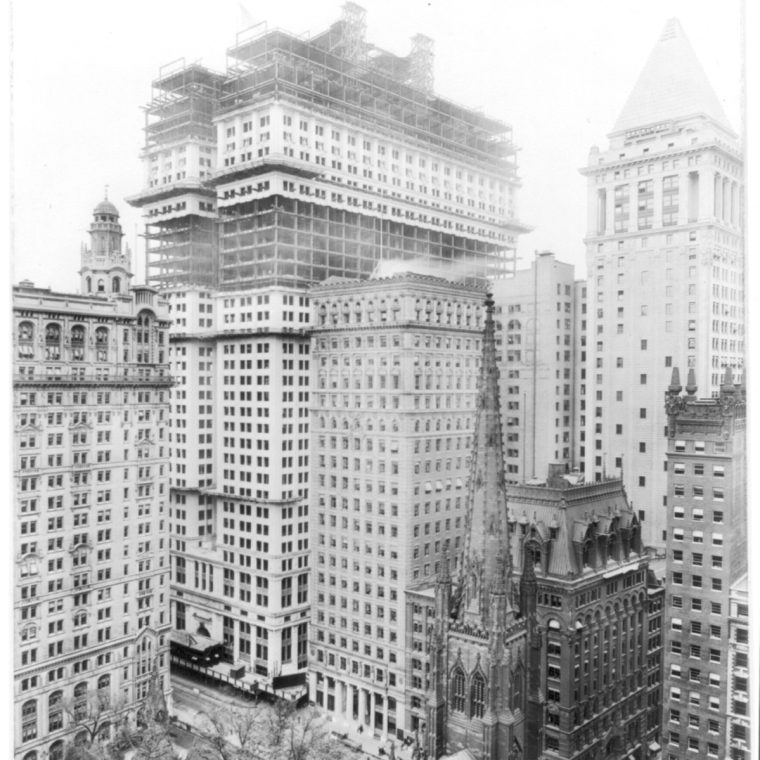I have found a new old building book to page through, but this one is a little different. Unlike the marketing books I’ve looked at in the last month or so, this one is a book of specifications. More specifically:

This was the new building after the original 1870 (plus later extensions) building burned; this building is the one that was used as an example of why building-bulk restrictions (eventually, the 1916 zoning law) was needed in New York. There is a lot to look at in the specs, but I’m going to start before the work on the new building begins. Page 1 through 8 cover general conditions, and page 9 marks the beginning of foundations and masonry. Under the heading “Foundation Work,” we have the following:


There’s enough going on in those five subsections for me to write a dozen blog posts, so I’ll try to hit the high notes.
The first sentence under “Wrecking of Old Buildings on Site” – and I prefer the euphemism-free word “wrecking” to “removal” – is oddly phrased for a specific reason. It is worded to exempt the existing sidewalk vault from demolition. I’ve seen any number of buildings where the vaults are older than the building itself, and in this case the same company owned the old and new buildings on site, but this is the first time I’ve seen explicit directions to save the old vault to make it part of the new building.
The “Contractor’s Liability” section has a very familiar ring to it. I guess the issues involved with liability haven’t changed all that much in the last 110 years.
There are plenty of possible comparisons to the language in “Repairs to Adjoining Property.” I’m going to go with “Adjoining public and private property, including persons thereon, shall be protected from damage and injury during construction or demolition work in accordance with the requirements of this section. Protection must be provided for footings, foundations, party walls, chimneys, skylights and roofs.” It’s a reasonably close statement and it’s from the current NYC Building Code. Some responsibilities never change.
The second paragraph with regard to Protection for Workmen is reasonably generic and, one hopes, obvious. The first paragraph is very specific, and is needed where workers will be operating in compressed air. In other words, it’s needed if pneumatic caissons are to be used in the foundations. A hospital lock is a small room used to bring people suffering from caisson disease (the bends) back under pressure to alleviate their symptoms.
Finally, the Day and Night section seems to imply that a standard shift is 12 hours or so, if double shifts lead to continuous work. From our perspective that doesn’t mesh very well the protection for workers, but the topic of worker health and safety has probably changed more than any other in the intervening years.




You must be logged in to post a comment.